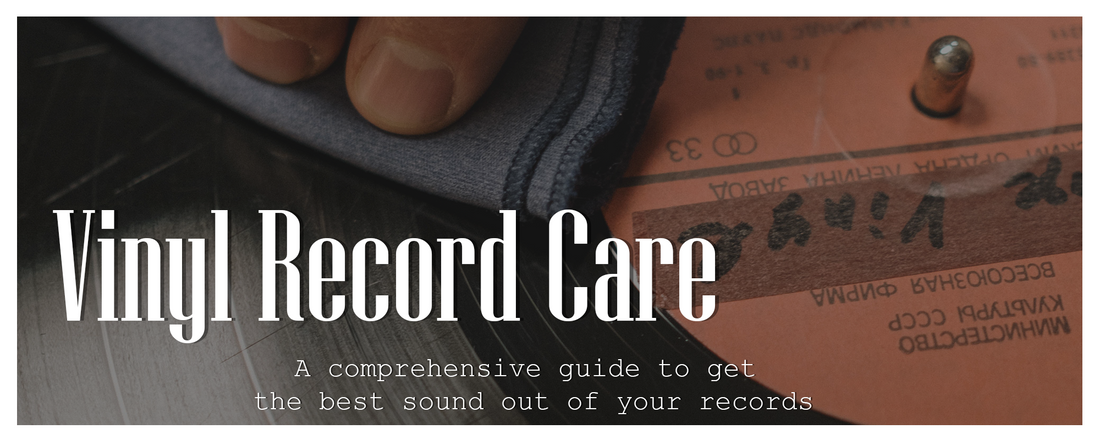As your collection of records expands, you might find yourself contemplating how to preserve the pristine condition of your favorite albums. Whether you're a seasoned collector or just embarking on your vinyl journey, understanding the proper methods to clean and care for your records is essential. This blog post will walk you through a step-by-step process for effectively cleaning and maintaining your vinyl records.
The Significance of Cleaning Vinyl Records
Cleaning your vinyl records holds crucial importance for various reasons. Firstly, it aids in the removal of dust, dirt, and other debris that may accumulate on the surface, leading to unwanted noise and compromising sound quality. Additionally, particles from the pressing plant or residue from paper inner sleeves can find their way into the record's grooves.
Secondly, regular cleaning helps eliminate static electricity, which tends to attract more dust and could potentially harm your records. As you handle and play your records, static build-up is inevitable. Proper cleaning methods can mitigate this static and ensure a pop/noise-free listening experience.
Lastly, maintaining clean records extends their lifespan, allowing you to enjoy your favorite music for years. Debris on the grooves can cause premature wear, and in some cases, damage can occur as the stylus moves across the surface.
Essential Tools for Cleaning Vinyl Records
While there are various tools, kits, and machines available for cleaning records, you can achieve effective results without them. For a manual cleaning approach, you'll need:
- Carbon fiber brush or anti-static brush
- Record cleaning solution
- Microfiber cloth or record cleaning cloth
Step-by-Step Guide to Cleaning Vinyl Records
Step 1: Remove dust and debris Use a carbon fiber or anti-static brush to gently remove dust and debris from the record's surface, brushing in the direction of the grooves.
Step 2: Apply the record cleaning solution Apply a small amount of cleaning solution to a microfiber or record cleaning cloth. Gently wipe the record in a circular motion, covering the entire surface without applying excessive pressure.
Step 3: Rinse the record Follow the manufacturer's instructions for rinsing if using a record cleaning machine. If not, rinse the record under lukewarm running water, ensuring to keep the label dry.
Step 4: Dry the record Pat the record dry with a clean, lint-free cloth and allow it to air dry completely before returning it to its sleeve.
Other Cleaning Methods
If you are looking to invest in one of the more expensive cleaning machines or if are curious on how that process works check out our own Record Cleaning Service. This service is offered with all of our records and is intended for those who want to achieve the best possible sound from them.
Additional Tips for Maintaining Vinyl Records
- Handle records with care Always handle records by the edges or center label to prevent touching the playing surface, which can leave fingerprints and oils.
- Store records properly Store records vertically in a cool, dry place, away from direct sunlight and extreme temperatures. Upgrade your protective inner sleeves to prevent scratching and static build up. You should also use outer sleeves to prevent scratches and shield album covers from dust.
- Avoid stacking records Store records upright to prevent warping and damage, avoiding stacking, which can compromise their shape and integrity.
- Regularly clean your turntable by dusting it regularly and cleaning the stylus to ensure optimal playback and prevent debris transfer onto your records. When cleaning the stylus use a stylus brush so that you don't damage your all important needle.
By incorporating these cleaning and maintenance practices, you can preserve the quality and lifespan of your vinyl records, ensuring the longevity of the warm, rich sound that they provide. Keep the vinyl experience alive for generations to come!

